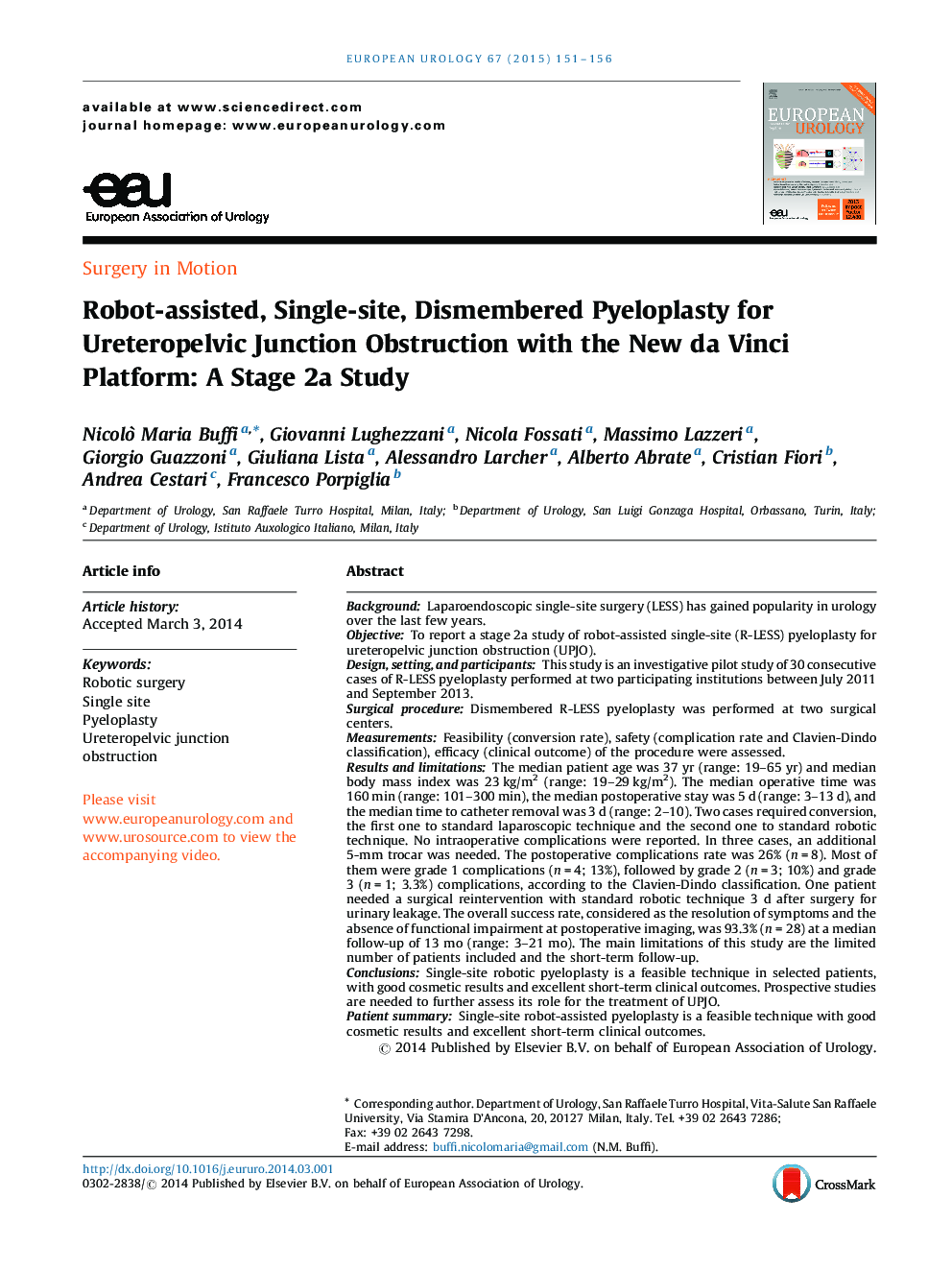| Article ID | Journal | Published Year | Pages | File Type |
|---|---|---|---|---|
| 3924543 | European Urology | 2015 | 6 Pages |
BackgroundLaparoendoscopic single-site surgery (LESS) has gained popularity in urology over the last few years.ObjectiveTo report a stage 2a study of robot-assisted single-site (R-LESS) pyeloplasty for ureteropelvic junction obstruction (UPJO).Design, setting, and participantsThis study is an investigative pilot study of 30 consecutive cases of R-LESS pyeloplasty performed at two participating institutions between July 2011 and September 2013.Surgical procedureDismembered R-LESS pyeloplasty was performed at two surgical centers.MeasurementsFeasibility (conversion rate), safety (complication rate and Clavien-Dindo classification), efficacy (clinical outcome) of the procedure were assessed.Results and limitationsThe median patient age was 37 yr (range: 19–65 yr) and median body mass index was 23 kg/m2 (range: 19–29 kg/m2). The median operative time was 160 min (range: 101–300 min), the median postoperative stay was 5 d (range: 3–13 d), and the median time to catheter removal was 3 d (range: 2–10). Two cases required conversion, the first one to standard laparoscopic technique and the second one to standard robotic technique. No intraoperative complications were reported. In three cases, an additional 5-mm trocar was needed. The postoperative complications rate was 26% (n = 8). Most of them were grade 1 complications (n = 4; 13%), followed by grade 2 (n = 3; 10%) and grade 3 (n = 1; 3.3%) complications, according to the Clavien-Dindo classification. One patient needed a surgical reintervention with standard robotic technique 3 d after surgery for urinary leakage. The overall success rate, considered as the resolution of symptoms and the absence of functional impairment at postoperative imaging, was 93.3% (n = 28) at a median follow-up of 13 mo (range: 3–21 mo). The main limitations of this study are the limited number of patients included and the short-term follow-up.ConclusionsSingle-site robotic pyeloplasty is a feasible technique in selected patients, with good cosmetic results and excellent short-term clinical outcomes. Prospective studies are needed to further assess its role for the treatment of UPJO.Patient summarySingle-site robot-assisted pyeloplasty is a feasible technique with good cosmetic results and excellent short-term clinical outcomes.
